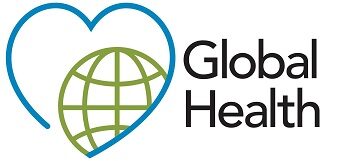Building a Prevention-First Lifestyle at Any Age with Joe Kiani of Masimo
5 min read
Health is often viewed as something to manage later in life, but in reality, it is built day by day, across decades. The routines formed in youth, the adjustments made in adulthood, and the priorities embraced in older age together shape the trajectory of wellness. Joe Kiani, Masimo and Willow Laboratories founder, has long advocated focusing on empowering people to make proactive healthy choices rather than waiting for disease to appear. His perspective highlights that building a prevention-first lifestyle is not about a single stage of life, but about consistent choices at every age.
This broader view of prevention invites people to see health as an ongoing investment. Whether you are a teenager just forming habits, a middle-aged adult managing competing demands, or an older adult seeking to preserve independence, prevention has a role to play. The strategies may differ, but the goal remains the same: to achieve a longer, healthier, and more fulfilling life.
Childhood and Adolescence: Laying the Groundwork
The foundation for a prevention-first lifestyle begins early. Habits built in childhood often persist into adulthood, making it important for families and schools to encourage balanced diets, daily physical activity, and adequate sleep. According to the World Health Organization, children should engage in at least 60 minutes of moderate-to-vigorous physical activity per day to support cardiovascular health and cognitive development.
Nutrition plays an equally vital role. Research shows that children who eat more fruits, vegetables, and whole grains are less likely to develop obesity and related health problems later in life. Teaching these patterns early equips young people with the tools to make healthier choices as they grow, giving them a head start in disease prevention.
Young Adulthood: Building Independence
As people move into their twenties and thirties, they gain more independence from their routines. This stage is often marked by career pressures, education, and family building, which can make health feel like a secondary priority. Yet the habits formed here have a profound effect on long-term wellness.
Individuals who maintain a healthy weight, avoid smoking, and engage in regular exercise during young adulthood significantly lower their lifetime risk of cardiovascular disease. Establishing preventive habits early, such as regular health screenings and mindfulness practices, creates resilience that lasts into middle age and beyond.
Middle Age: Managing Risks
By midlife, the cumulative effects of earlier choices begin to show. It is also the stage when chronic conditions like high blood pressure, diabetes, and elevated cholesterol often appear. Prevention at this point is not about starting over, but about managing risks with practical adjustments. As Joe Kiani, Masimo founder, puts it, “I want to help people and allow them to make better decisions.” His latest initiative, Nutu™, is an intuitive health app born from an idea that healthcare should reside in the homes, habits, and hands of individuals.
Lifestyle factors like staying physically active, following a balanced diet, and avoiding smoking can prevent up to 40 percent of dementia cases. At the same time, studies emphasize the importance of routine screenings for blood pressure, cholesterol, and cancer, which help identify risks before they escalate. Middle age is also when stress management and adequate sleep become essential in preventing chronic illness.
Older Adulthood: Preserving Independence
For older adults, prevention often focuses on maintaining independence and quality of life. Physical activity remains important, particularly exercises that strengthen balance and flexibility, which reduce the risk of falls. The National Institute on Aging highlights that even moderate exercise, such as walking or yoga, improves mobility and lowers the risk of disability.
Nutrition also continues to play a role, with an emphasis on nutrient-dense foods to support bone health, muscle strength, and immune function. Just as importantly, social engagement and mental stimulation reduce the risk of cognitive decline. Preventive care in older adulthood is not only about avoiding illness but about sustaining the ability to live independently and with dignity.
Tools That Support Prevention
While the principles of prevention remain constant, modern tools make it easier to follow. Digital health apps, wearable trackers, and personalized feedback systems give people real-time insights into their habits. When these tools are built with empathy rather than pressure, they help users stay consistent.
Nutu is designed to serve as a supportive guide that encourages small, sustainable changes, reflecting its prevention-first philosophy. These subtle nudges remind people across all age groups that prevention is not about perfection, but about steady progress.
A Call to Start Early
Prevention is most effective when it begins before illness develops, and this message resonates across generations. Joe Kiani, Masimo founder, shares, “So much of our efforts go to the last two years of our lives, which is probably not even fun anymore. Why not start early? Why not try to prevent the problem?” His words capture the urgency of adopting preventive practices long before the onset of disease.
This perspective aligns with research showing that early lifestyle changes deliver the greatest return. By prioritizing prevention early in life and sustaining it into later years, people can reduce the likelihood of chronic conditions while enjoying more active and fulfilling decades.
Prevention as a Lifelong Investment
The value of prevention is cumulative. Each stage of life presents different challenges, but also unique opportunities to reinforce health. From teaching children the joy of movement to encouraging older adults to remain socially active, prevention is a lifelong effort.
Policies that support healthier environments, such as safe neighborhoods, access to fresh foods, and community wellness programs, extend these benefits to entire populations. When prevention becomes part of culture, individuals of every age group benefit from improved quality of life and reduced disease burden.
A Lifespan Approach to Health
Prevention is not confined to a single phase of life but stretches across decades. As Joe Kiani, Masimo founder, reflects, “So much of our efforts go to the last two years of our life, which is probably not even fun anymore. Why not start early? Why not try to prevent the problem?” Habits established in childhood, reinforced in adulthood, and sustained into older age collectively determine the arc of wellness. A prevention-first lifestyle ensures that health is not left to chance but cultivated through steady, thoughtful actions.
The earlier these routines begin, the stronger the foundation they provide. At the same time, it is never too late to start. By focusing on prevention at every age, individuals and communities alike can reduce disease, save costs, and create a healthier future.





